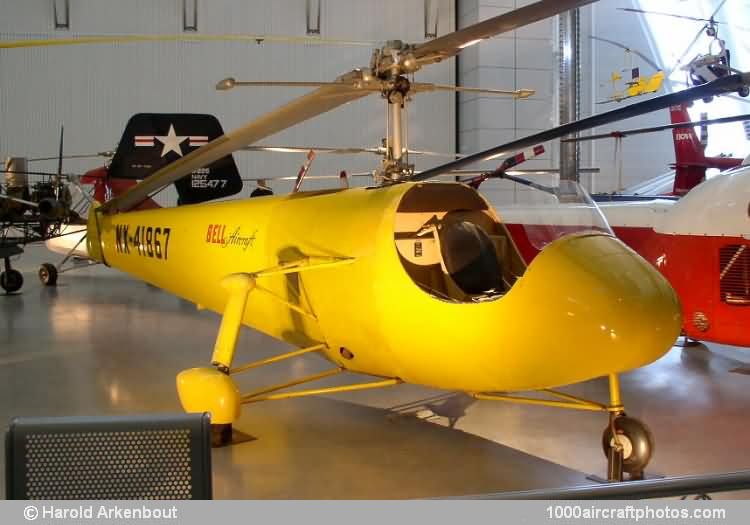08/15/2008. Remarks by Johan Visschedijk: "The young inventor Arthur Young had been working on the development of a helicopter for ca. thirteen years, when he proved the concept to Larry Bell with an electrically driven flyable control line model on September 3, 1941. Subsequently he was hired and development work on Bell's first helicopter began on November 24. On May 1, 1942 a shop was rented in Gardenville, New York, where Young and a small team moved into on June 23, and started constructing the Model 30.
It was a single-seat helicopter with an open structure and a four-legged un-wheeled landing gear and powered by a 160 hp Franklin 6V4 six-cylinder horizontally-opposed air-cooled piston engine. Named Genevieve (later registered as NX41867, c/n 1), it made its first tethered flight on December 29, 1942, with Young at the controls. It crashed the following month, seriously injuring the test pilot Bob Stanley; when repaired, Floyd Carlson made the first free flight on June 26, 1943.
Subsequently the fuselage was covered and a three-wheeled tail landing gear was fitted that was later changed into a three-wheeled nose landing gear; the c/n was altered into 1A. Unfortunately the aircraft crashed again in September 1943, this time with Carlson at the controls, who escaped injuries. The helicopter was repaired in 1944 and used for further trail, whereafter it was donated to the Franklin Institute, which in turn donated the aircraft to the Smithsonian in 1964, where it was put in storage. After being restored the aircraft was loaned to the American Helicopter Museum at West Chestere, Pennsylvania, it returned to the Smithsonian after NASM's Steven F. Udvar-Hazy Center was opened."
